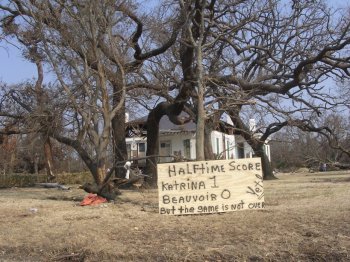
After last week’s long trail of lost landmarks, I thought we should brighten up the mood a little with a few survivor stories that show that all was not lost. There are still historic places on the Coast (and inland) in need of repair and renewal, and many dedicated people have spent much of the last four years through many difficult and emotionally exhausting situations working toward that end. Earlier this year, MissPres highlighted the re-opening of the Waveland School/Community Center as a sign of hope for that devastated community. This week we’ll continue that theme, showing off a few success stories of preservation on the Coast.
Of course, I have to start with Beauvoir (aka Jefferson Davis Shrine–a name whose religious overtones make me wince), even though most of you probably followed its rebuilding from beginning to end. Beauvoir is such a symbol of the Coast, and it was the landmark that people in the coastal communities would always ask about when I would visit after the storm. I remember the day after the storm when Gov. Barbour said “Beauvoir is destroyed.” I was shocked and horrified–could it be true? Thankfully not–as word began to trickle up from the Coast, it became clear that Beauvoir was very badly damaged, and some of its buildings were actually destroyed, but the main house itself was still standing, although admittedly not looking her best. Built on 8 or 9-foot high massive brick piers, the house itself only took a little water inside, but the force of the surge pulled off the wrap-around porch, and along with it, a large section of the roof that had extended out over the porch.
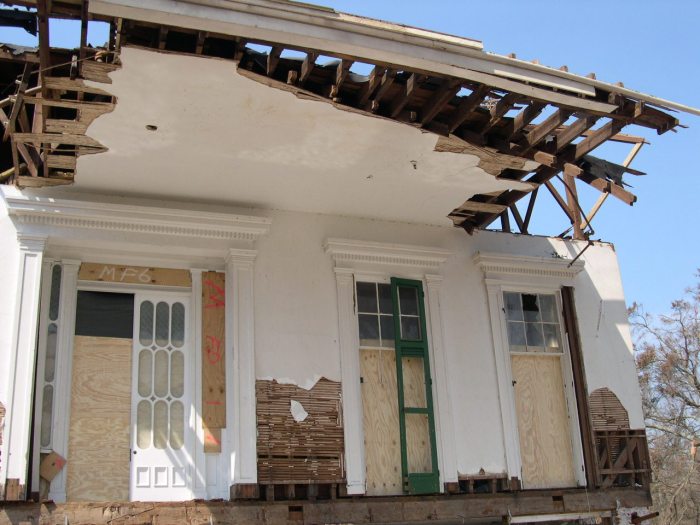
Beauvoir Sept 2005, showing what's left of the roof over the porch, photo courtesy Mississippi Heritage Trust
As strange as it may sound, Beauvoir’s future hung in the balance for almost a year, although the staff and many volunteers worked to clean up the site and salvage as many artifacts as they could from the bayou that runs behind the main house and museum/library. I can’t tell the whole story, not because I don’t want to, but because I don’t ‘xacly understand it myself. A court battle over whether the national Sons of Confederate Veterans or the Mississippi chapter owned the property kept the insurance payment from coming to the aid of the house. While all this brouhaha was going on, many private donors helped at least get the roof somewhat stabilized by March 2006, when this picture was taken.
Finally, the national chapter won the court case, and as I understand it, many of the Mississippi chapter leadership left the organization (again, I’m just repeating things I heard since–don’t tell anyone–I’m not actually a Son or Grandson or any other type of descendant of a Confederate Veteran). Anyway, whichever side you were on, at least one positive of the court’s decision was that it finally cleared the way for the insurance money to flow.
In the meantime, FEMA, about which I often don’t have much good to say, threw millions of dollars into the pot, in spite of one congressman’s questioning why federal money was being spent to pay for a “traitor’s house” to be re-built. Well, it’s a valid question I guess, but a little more graciousness might have been in order under the circumstances.
The federal, state, and private money combined allowed a real restoration of the main house, which is now more restored to its Jefferson Davis period than probably ever before, maybe even spiffier than when Jeff Davis himself was living. One thing the architect, Larry Albert of Hattiesburg, wanted to make sure of in the restoration was that the area around the foundation piers would not be filled in again–concrete block walls had been erected after Camille, allowing use of this area for a museum store and storage, and Albert believed this was the main reason the porch had been ripped off because the water couldn’t flow through as it was meant to. The interior is exceptionally well done, with the plasterwork and fresco-type painting professionally conserved and restored. They even uncovered a landscape painting on one of the mantels that they think maybe Varina herself made.
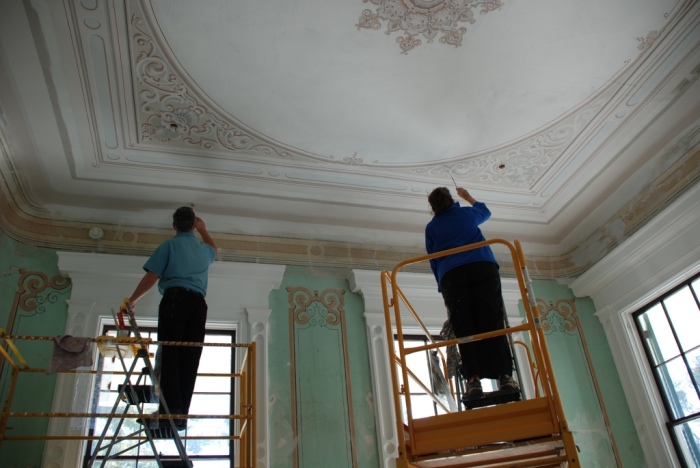
Artists re-touch and in some cases re-create the wall and ceiling "frescoes" in the main house. Photo courtesy Mississippi Dept. of Archives and History
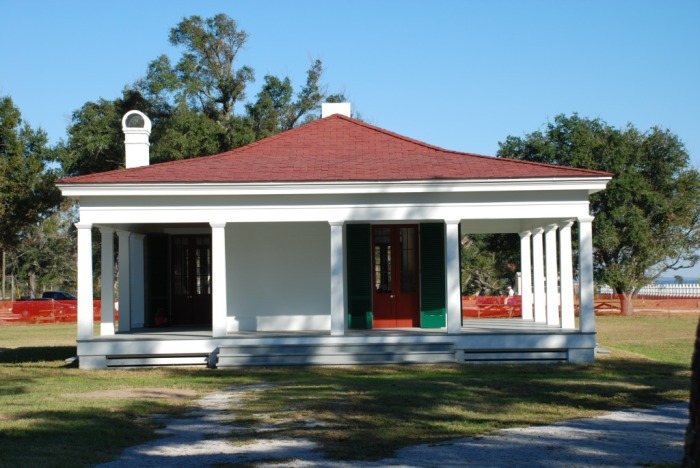
Library pavilion at Beauvoir, re-construction of the library where Jefferson Davis wrote his 2-volume "Rise and Fall of the Confederate Government"
The main house re-opened to visitors on June 3, 2008, the 200th anniversary of Jefferson Davis’ birthday. A good time was had by a large case of characters. As one visitor pronounced, there was more fire-eatin’ going on there than he had heard in many a year.
Next time you’re on the Coast, stop in and check out the continuing progress. The two pavilion buildings that flanked the main house, both destroyed in Katrina, have been re-built, and the Presidential Library is being re-built as well. Beauvior is still struggling, with reduced tourism and of course huge infrastructure costs. Let’s support this National Historic Landmark in whatever way we can.
This is the first in the Katrina Survivors series–see others in the series?
- Katrina Survivors: Randolph School, Pass Christian
- Katrina Survivors: Charnley Houses(s), Ocean Springs
- Katrina Survivors: Regular People Saving Their History
Categories: Biloxi, Cool Old Places, Gulf Coast, Historic Preservation, Hurricane Katrina, Mississippi Landmarks, Museums, Renovation Projects

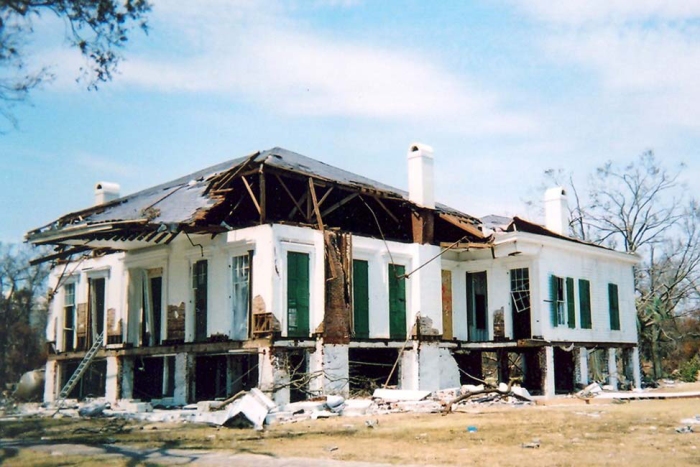
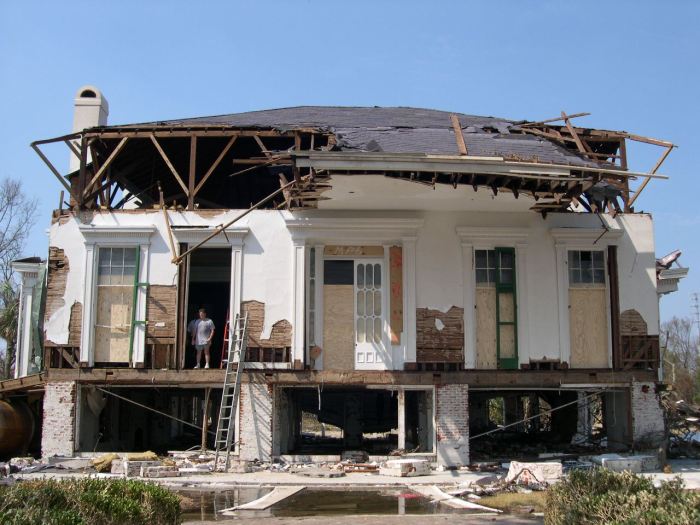
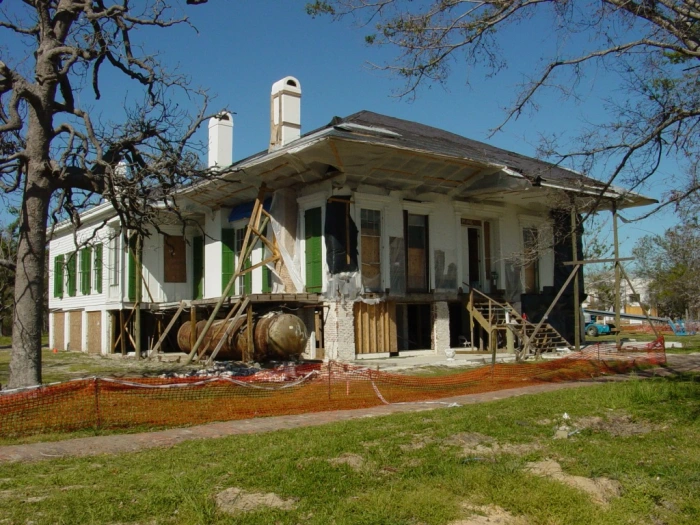
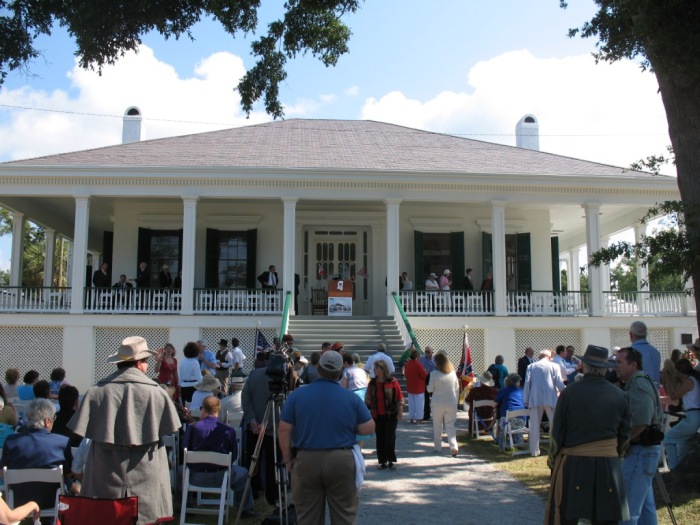
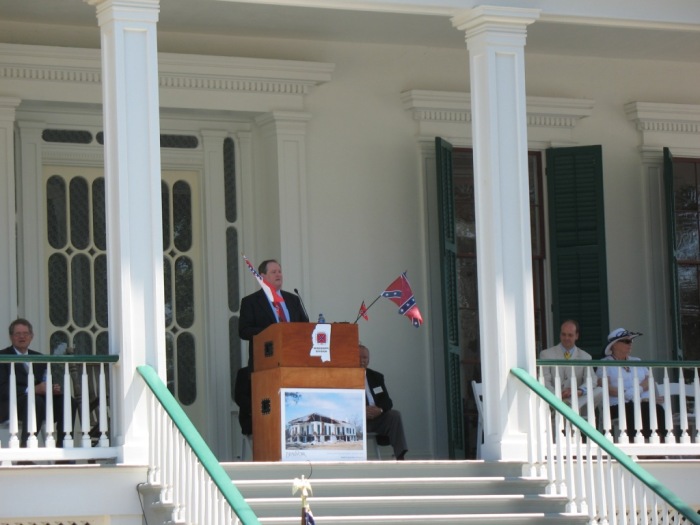










ELMalvaney – During my tenure as Director of the MDAH Gulf Coast Field Office, Ken P’Pool and I had need to go to the FEMA office set up down there…someone had an interesting image of “Beauvoir” tacked to their cubicle wall; it was taken shortly after the hurricane and included a temporary tarp applied over the structure that was the remains of one of those rubber-membrane political bill board adverts. I meant to procure a copy of that image before leaving down there, but didn’t. Speaking of FEMA, their temporary office set-up was a sight to behold and walk through…I do not know where I have seen such a cavernous space partitioned by so many cubicles and into such a labyrinth of passages – thought it would have made a fascinating photograph taken from the ceiling.
LikeLike